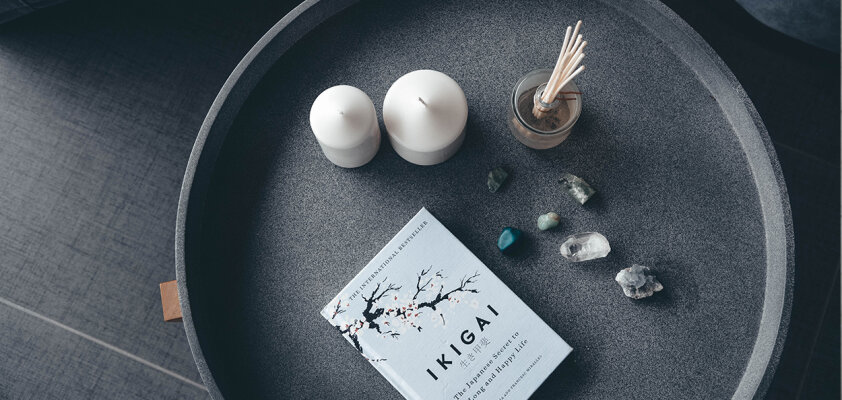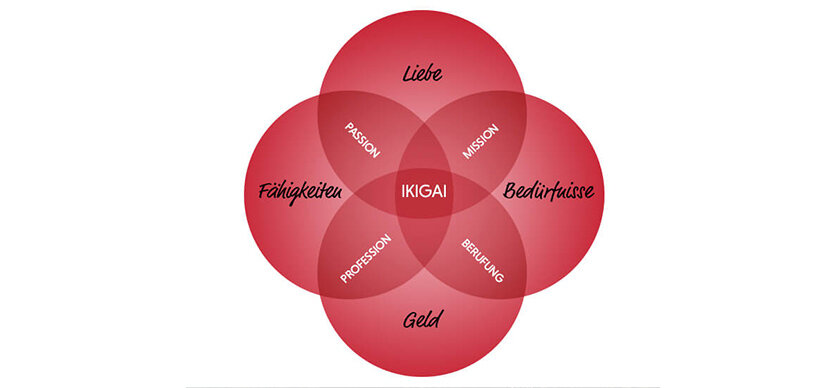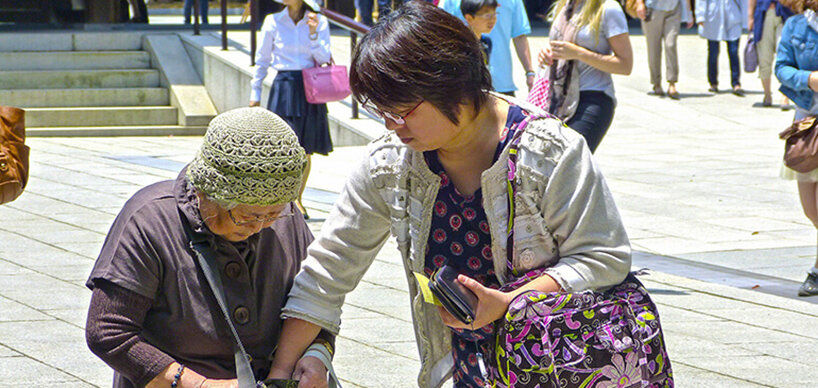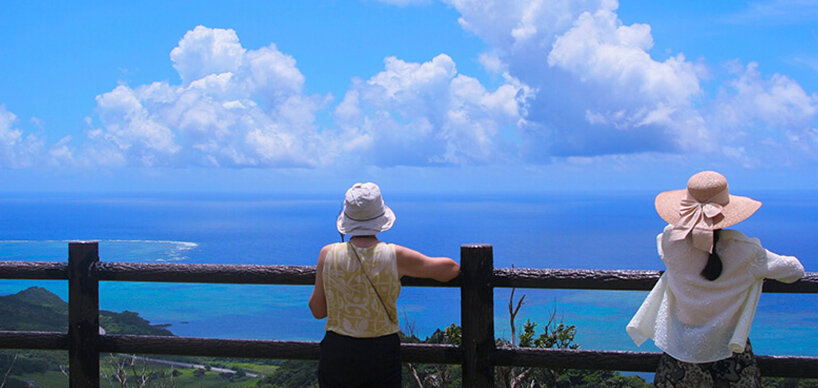Ikigai - Finding Your Way to More Satisfaction in Life

Inhaltsverzeichnis
Ikigai - Life-affirming philosophy from Japan What exactly is Ikigai? The right intersection Why is this topic still so important today? Where is Ikigai practiced most frequently? How do I find my personal Ikigai? Find your own ikigai for inner satisfaction Successfully mastering crisis situations for a good life Advantages of Ikigai in practiceRecognizing a personal sense of purpose and starting the day with joy. This is probably what most people wish for. In Japanese, this life philosophy is called "Ikigai" and focuses on the overarching meaning of life. Here, we introduce the concept with practical tips on how to integrate it into your everyday life.
Ikigai - Life-affirming philosophy from Japan
Ikigai (Jap. 生き甲斐) refers to a set of guiding questions to determine one's own sense of purpose and find a reason to get up every day. The Ikigai model is closely linked to the high life expectancy of the Japanese population. It consists of the Japanese words "Iki" (生き), which translates to "live," and "gai" (甲斐), which describes the value of something. Ikigai explores the meaning of life in the world and what makes it worthwhile to start the day in the morning.
What exactly is Ikigai?
The pronunciation of the term is not difficult, and it is pronounced exactly as it is written, i.e., I-ki-gai. The origin of the word dates back to the Heian period (794 to 1185 AD). Psychologist and Ikigai model specialist Akihiro Hasegawa published a research project in 2001, revealing that the word "gai" also means "kai," which translates to shell or clam in Japanese. During the Heian period, shells held very high value. Additionally, the term is also related to other Japanese words such as "hatarakigai" (働きがい), indicating the value of work, and "yarigai ~ga aru" (やり甲斐がある), which means "it is worth doing." The concept of Gai is the key to discovering one's own purpose in life.
The right intersection
The best way to illustrate the Far Eastern method for a fulfilled life is to visualize the model. A depiction of the Ikigai model shows a diagram with four overlapping components. It consists of four thematic complexes, which can be considered both professionally and from a personal perspective. These are the following questions:
- Passion - What do I love in my life and what is worth getting up for in the morning?
- Mission - What am I exceptionally good at?
- Vocation - What does the world need, and for what purpose are my skills needed in this world?
- Profession - What does my job look like, and how can I make money with my work?

In the next step, jot down in bullet points what big and small things make you happy in life. The four thematic areas are represented in the diagram as overlapping circles, forming a beautiful flower. In the so-called intersection of two circles, it is easy to identify which vocation or passion they fulfill. The ideal state of the Ikigai model is achieved when there is a point where all areas intersect.
Why is this topic still so important today?
Many sociologists, scientists, and journalists have delved into the guidance and method of the Ikigai phenomenon, drawing a series of interesting conclusions. One theory suggests that Ikigai sustainably supports the personal search for happiness, and the resulting reduction in stress can prolong life.
A well-known Japanese TV program collaborated with a group of scientists to explore the reason for the high age of residents in the small town of Kyotango in Kyoto. Here, three times as many people live over 100 years compared to the rest of the country (excluding Okinawa).

The researchers documented and analyzed the lifestyle habits of a group of individuals aged between 90 and 105 years. What becomes interesting is that an exceptionally high level of the steroid hormone DHEA (Dehydroepiandrosterone) was found in all participants in the study. This hormone is known for its outstanding anti-aging effect.
The oldest individuals in the town had another commonality deeply rooted in the local culture. They all had a passion or hobby that they pursued daily. For instance, a woman approaching 100 years spent several hours each day crafting Japanese masks. The ability to engage in an individual hobby throughout life, even into old age, is believed to contribute to greater happiness.
Where is Ikigai practiced most frequently?
The Ikigai method is particularly commonly practiced on the southern island of Okinawa. People from this region are known to be among the healthiest and oldest individuals in the world. The subtropical climate, a healthy diet, and low stress levels are factors contributing to why people in Okinawa often lead happy and long lives.

Additionally, many residents continue to pursue their professions into old age or have a fulfilling hobby. There is no concept or definition for the word "retirement" or "retiree" there, and they know how to fill their entire day with joy. Okinawa is among the so-called "blue zones" in the world, known for the longevity and contentment of its local population. Other regions include Sardinia in Italy and Ikaria in Greece, among others. Ten years ago, author Dan Buettner, along with a research team of anthropologists, historians, and nutrition scientists, investigated the phenomenon of "Blue Zones" and documented the results in the book "The Secrets of a Long Life." One insight was that people in the selected regions led a life according to the Ikigai method. Ikigai is also a topic and an integral part of Japanese culture outside Okinawa. Many young people in Japan are also engaged in the search for Ikigai, seeking their vocation independently of money. In particular, the younger generation of Millennials is looking for meaning in their lives and wants to pursue a profession they love and that not only pays them.
How do I find my personal Ikigai?
In the book "Ikigai: Gesund und glücklich hundert werden" by researcher Hector Garcia, the author explains how, after years of research, he integrated the Ikigai method for a happy life into his daily routine. In his study, Dr. Garcia emphasizes that the pursuit of happiness is not solely about work and money. While these are important factors in life, it is also about knowing what makes one happy. In addition to achieving success in the job and earning money, various other factors also play a role. This includes knowing what things bring joy. For a fulfilling life, it is also important how much time one spends with people they love. Therefore, the search for a vocation independent of money, which gives one's life meaning, is equally important.
Find your own ikigai for inner satisfaction
Several possibilities can significantly simplify the path to your personal Ikigai. For example, you can follow your individual thoughts on the topic of happiness and write down things that bring you particular joy on a daily or weekly basis. It's best to start with the core questions mentioned above and read them thoroughly. You can then directly write down your personal answers.
Successfully mastering crisis situations for a good life
Ikigai describes the understanding and individual pursuit of happiness. This encompasses essential aspects such as profession, compensation, and money, as well as personal relationships and hobbies. It may also be helpful when navigating changing circumstances in the midst of a career and trying to cope with the feeling of loss of control. Therefore, it is an excellent choice for finding oneself in uncertain situations.
Advantages of Ikigai in practice

In the philosophy of Ikigai, the ultimate goal is to lead a fulfilled life. What can be more satisfying than recognizing one's own life purpose and following it? The Ikigai template also allows enough room for the reality that compromises may be necessary. This includes, for example, reconciling personal interests and preferences with a structured professional life. Every step someone takes towards fulfillment, love, and self-realization is worth taking.











-from-the-yakiyaki-grill-pan.jpg)




